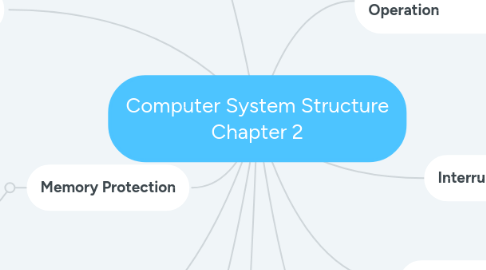Computer System Structure Chapter 2
by shun jie goh


1. Storage Structure
1.1. Ram as Main memory volatile storage,Hard Disk as secondary Memory (Hard Disk), support many type of storage.
2. Memory Protection
2.1. To protect the RAM from interrupt while the RAM are in working process
2.1.1. 1. Base Register hold the smallest memory
2.1.2. 2.Limit Register-Hold the largest memory
3. Dual-mode Operation
3.1. Computer need to identify which mode use computer use , USER mode(1bit) or KERNEL mode (0-bit)
4. Storage Hierachy
4.1. Oranize buy system cost and volatility
4.2. CACHING move from magnetic disk to main memory to cache to hardware register
5. Operating system goal
5.1. User goal- easy to learn ,use , reliable and safe
5.2. System goal-Operating system should be easy to design,implement and design as flexible
6. Protection
6.1. I/O
6.1.1. User program cannnot issue i/o insturction directly.
6.2. Memory
6.2.1. Base register
6.2.2. Limit Register
6.3. Hardware address
6.3.1. when execute kernel mode , access monitor mode n user memory
6.4. CPU
6.4.1. Timer
6.4.1.1. when timer interrupts control transter to OS
6.4.1.2. Load time is privilleged insturction

